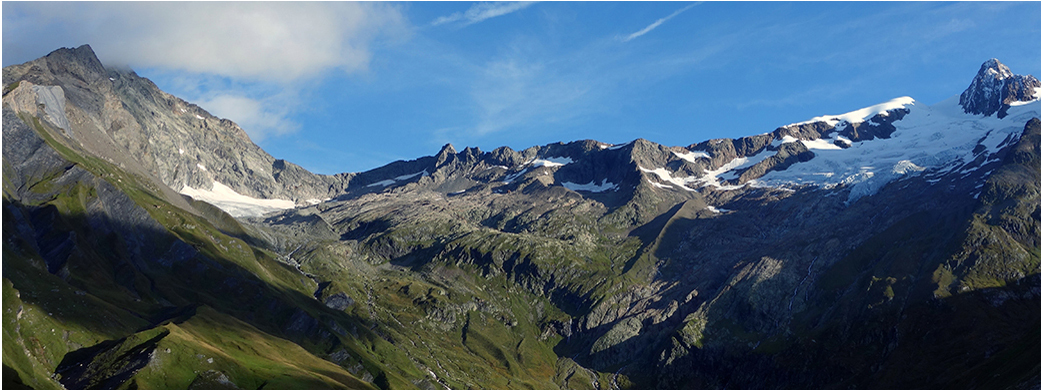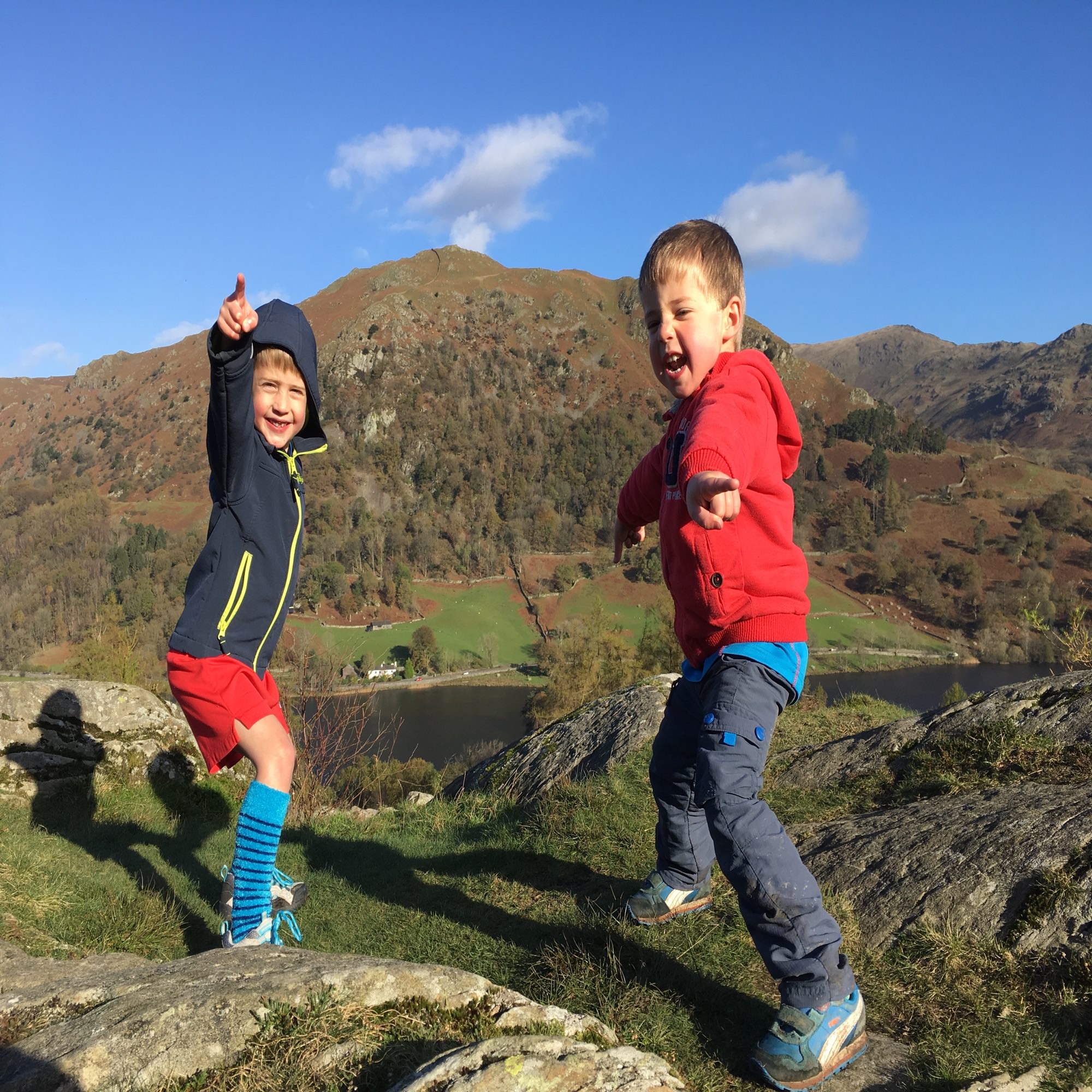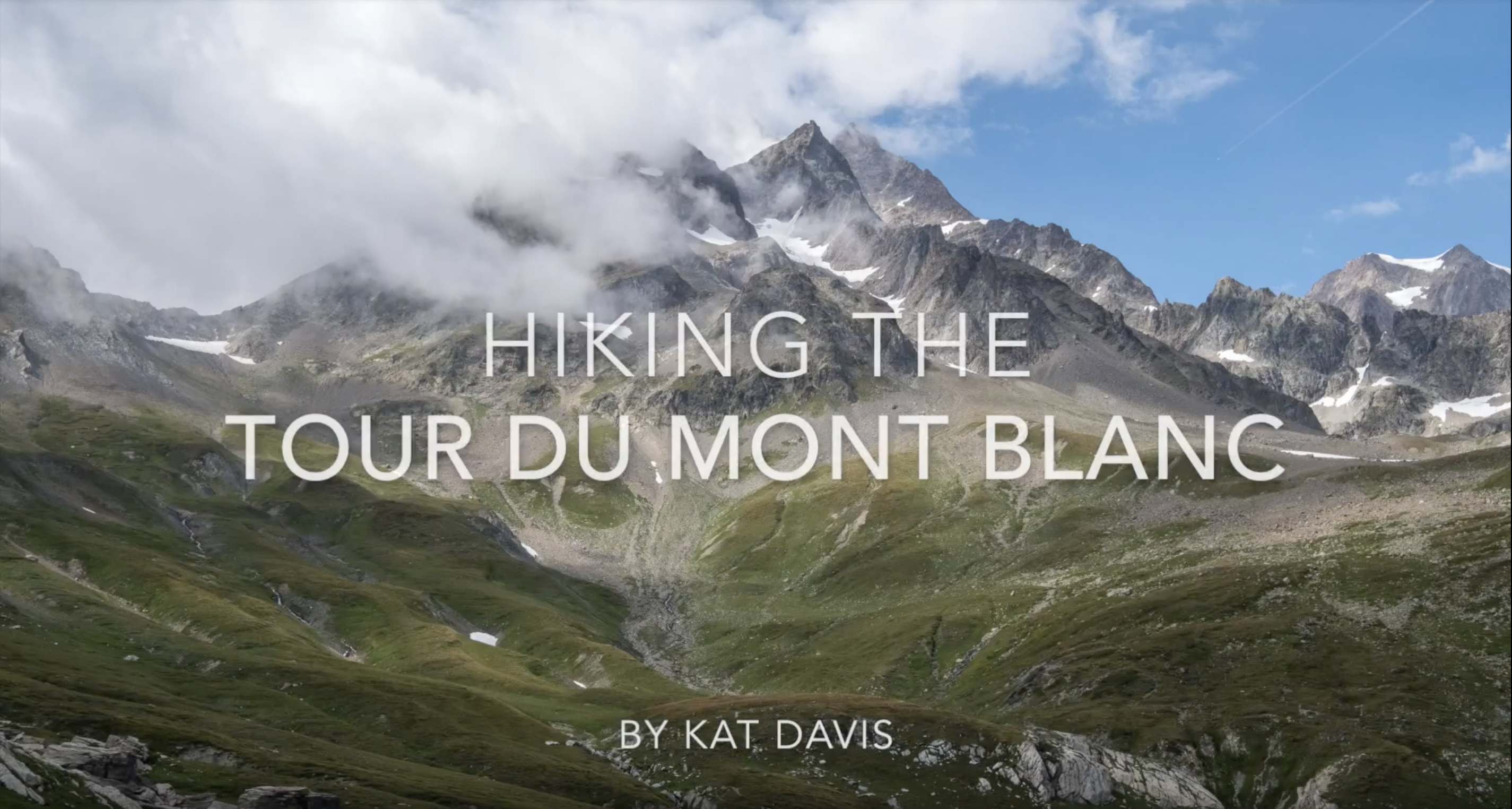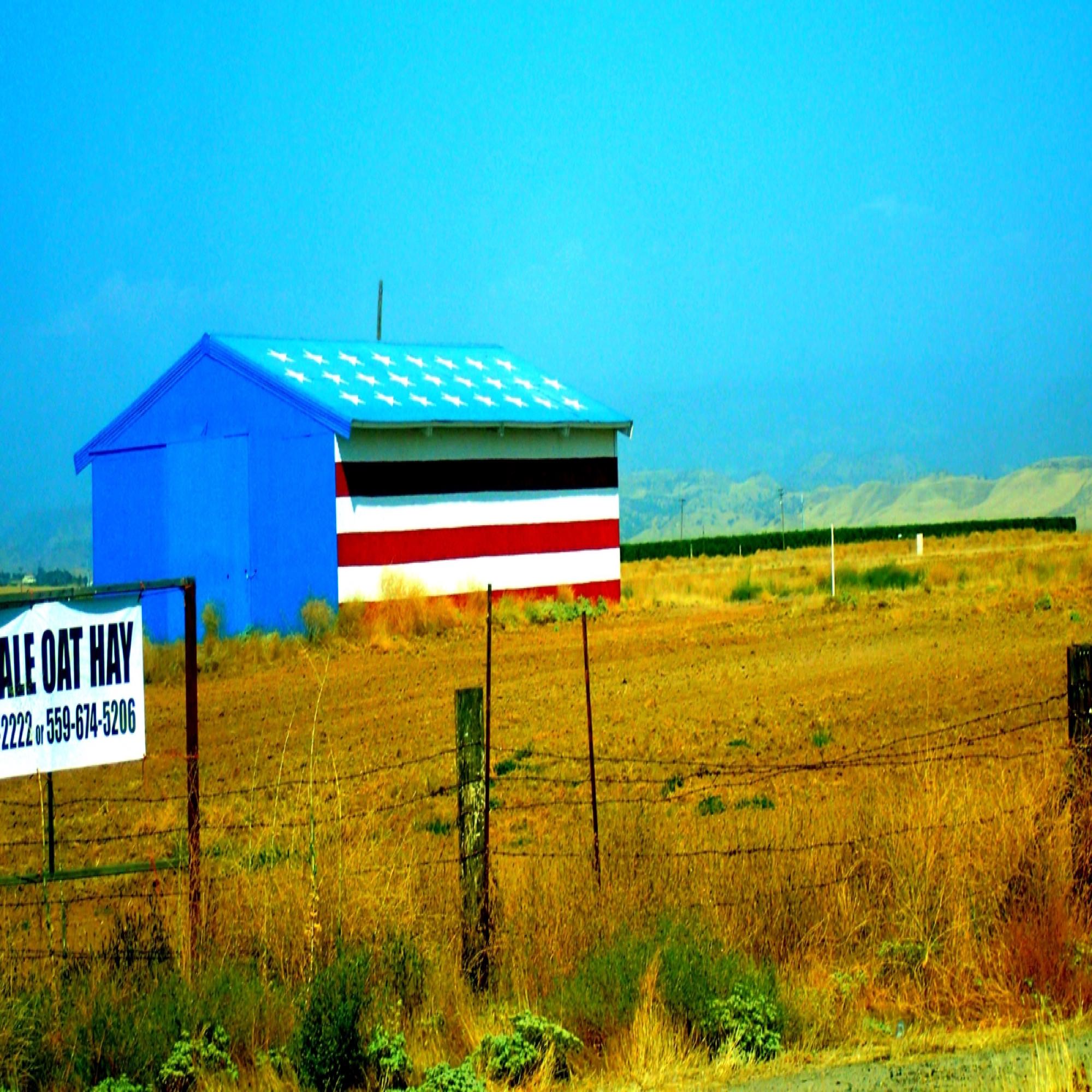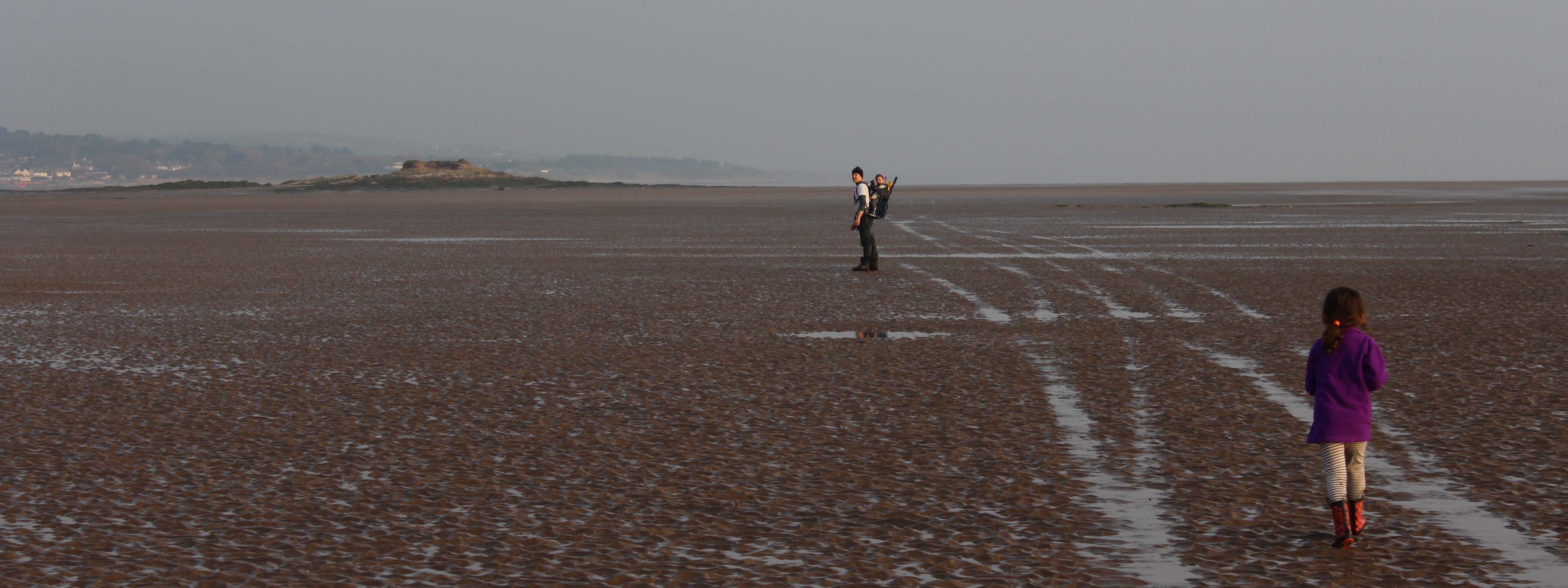Trekking with an infant 1: Starting to plan
Jen Lumanlan traveled from the USA and did the Tour of Mont Blanc with her daughter when Carys was only 8 weeks old. This article is the first of three in which she shares her experiences of taking an infant trekking. Here she focuses on choosing a destination, making reservations, picking a travel companion and training – for Mum and for baby.
I’m a hiker. I’ve been doing it for so long that it’s part of who I am – the theme of my wedding was Hiker Marries Biker (the Hiker now bikes as well, but the Biker never hikes). One of the many reasons I put off having a baby for so long was because I didn’t want to lose such a big part of myself, and I didn’t see a way to have it all. But eventually I did take the plunge, and while I was pregnant I started to wonder whether I could actually pull off a big trip – something like the Haute Route, from Chamonix to Zermatt, which I’d hiked two weeks before I got pregnant – with an infant.
This was not an endeavour that I undertook lightly, and neither should you. I planned extensively both before and after the baby was born, and in a short series of articles I’ll show you how you can plan and undertake a similar trip.

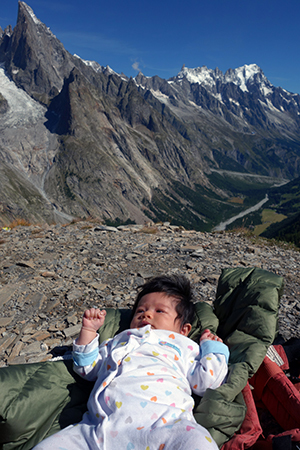
Where to go?
Selecting a destination is the most important part of the planning process. If you go somewhere you’ve already been, or close to where you’ve already been, a lot of the logistics will seem much easier. I have a strong preference for seeing new places so I didn’t want to repeat a trip, but I was already familiar with the travel arrangements to Chamonix from doing the Haute Route the previous year. I knew how to navigate the airport in Geneva, how to find the shuttle check-in desk, where to get a good baguette to eat en route, and that the shuttle driver would probably speak English in case I had a problem. All of this made the travel much less stressful for me than it otherwise might have been. This is not to say that you can’t go somewhere completely new, but when you’re anticipating some stress associated with traveling with an infant, it’s very comforting to be in a somewhat familiar environment.
Ideally, choose somewhere you speak the language. For me, that meant the English or French-speaking parts of the world. Learn key words and phrases you might need, including ‘where are the nappies?’ ‘I need help, my baby is sick,’ and ‘do you have any food that isn’t spicy?’. Yes, Google Translate will get you by at a pinch, but it’s good to know that you can negotiate on the fly if you have to – for example, when we arrived at Refuge les Mottets and the owner showed us to a corner of a noisy, crowded dorm, I was able to ask for a quieter room – so she opened an entire 50-bed cowshed just for us.
Hiking in the rain with an infant is not fun. It’s do-able for short periods if you get caught out, but you don’t want to be out in it for more than a couple of hours as it makes everything harder. Every time you stop – to feed, or to change a nappy – you risk the baby getting cold. Hiking in the shoulder season – April–mid-June and September – will give you the best balance of decent weather and flexibility to change your plans in case of rain. Many destinations get rain even in high summer, and you’re in trouble if it’s July: everything is booked solid, and you can’t change your accommodation at your next stop. We hiked in late August/early September, were only rained out one day, and were easily able to shift our plans as the huts weren’t full.
Consider the distance from where you are to where you want to go. For the vast majority of babies, flying is much easier than driving as you don’t have to stop for every feed, nappy change and fuss. Avoid connections if at all possible – it only increases the potential for something to go wrong. Allow time to get over jet lag if you're taking a long-haul flight; you will get it and the baby will too. Coming in from the USA to Europe we stayed with family in England for five days before a quick, direct flight to Geneva. I failed to follow this advice before a later hiking trip in Ireland, when Carys was 10 months old, and regretted it for half the trip.
Where will you sleep? Camping is theoretically possible but it’s a lot of gear to carry, on top of all your baby gear. Add in the potential for rain and cold and I decided it wasn’t for us. You could base yourself in a hotel or rent accommodation through someone like Airbnb for a week, and do day hikes for a relatively easy trip. The huts in the Alps were the perfect solution for us – amazing views by day, and a hot meal and warm bed every evening. Almost all had private rooms or could accommodate us away from everyone else in some other way. The fewer babies they see where you are, the better treatment you’re likely to get!
Have a plan for altitude sickness if you’ll be significantly higher than the elevation where you live. Check with your pediatrician first to make sure s/he doesn’t have any concerns about your trip. Start with a training hike at a higher altitude and watch for signs of acute altitude sickness in baby, including lethargy, decreased feeding, and/or excessive fussiness. We live at sea level in California and spent a weekend at 7000 feet with a day hike to 8200 feet – approximately the elevation we’d be hiking at in the Alps – with no adverse effects. Make sure your trip has bail-out options – this is not the time to do an extended backcountry stay with many days away from roads.
Another reason the Alps are so great – you can essentially hike from one village to the next, with regular opportunities to call it quits if you need to. We looked at our trip as a series of day hikes, and we told ourselves we would keep going as long as we were having fun. Eventually we stopped asking ourselves if we were having fun because we just were.
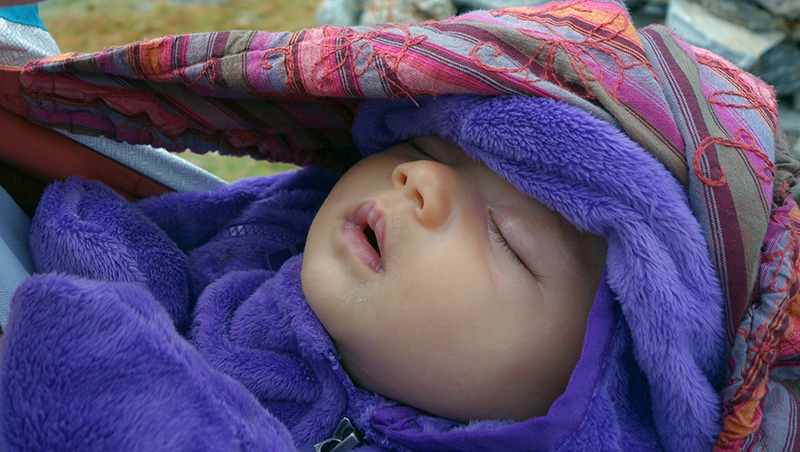
Where will you sleep? Camping is theoretically possible but it’s a lot of gear to carry, on top of all your baby gear. Add in the potential for rain and cold and I decided it wasn’t for us. You could base yourself in a hotel or rent accommodation through someone like Airbnb for a week, and do day hikes for a relatively easy trip. The huts in the Alps were the perfect solution for us – amazing views by day, and a hot meal and warm bed every evening. Almost all had private rooms or could accommodate us away from everyone else in some other way. The fewer babies they see where you are, the better treatment you’re likely to get!
Have a plan for altitude sickness if you’ll be significantly higher than the elevation where you live. Check with your pediatrician first to make sure s/he doesn’t have any concerns about your trip. Start with a training hike at a higher altitude and watch for signs of acute altitude sickness in baby, including lethargy, decreased feeding and/or excessive fussiness. We live at sea level in California and spent a weekend at 7000ft with a day hike to 8200ft – approximately the elevation we’d be hiking at in the Alps – with no adverse effects. Make sure your trip has bailout options – this is not the time to do an extended backcountry stay with many days away from roads.
Another reason the Alps are so great – you can essentially hike from one village to the next, with regular opportunities to call it quits if you need to. We looked at our trip as a series of day hikes, and we told ourselves we would keep going as long as we were having fun. Eventually we stopped asking ourselves if we were having fun because we just were.
Training
It goes without saying that Mum needs to be in good shape for this kind of trip. I’ve been a hiker for years, so I had a solid base to build on. After I got pregnant, my obstetrician told me not to let my heart rate go over 130 beats per minute. I got myself a new obstetrician, who said I could do whatever I liked as long as I felt good (check with your own doctor for advice specific to your needs and condition). I covered 5 miles a couple of days a week, with 8–10 miles at weekends, throughout my pregnancy, and I hiked about 6 miles to the top of Mt Tamalpais three days after my due date (it felt good: I didn’t deliver for another four days). Keep your legs – and your body – strong throughout your pregnancy, which will benefit you and the baby even if you don’t end up hiking, but don’t do any abdominal exercises until after your diastasis recti closes. Watch out for joint problems after delivery. The female body secretes relaxin before the birth, a hormone that softens the ligaments in the pelvis to prepare for the birth, and it can soften other ligaments, not just the ones in the pelvis – which could leave you more injury-prone. I didn’t have any problems with this, but stay alert for any signs of strain and take a rest day if you need one.
Don’t get too attached to the idea of your trip until after your delivery. My labour was long – and unmedicated – but I came out of it undamaged (no stitches anywhere on my body). If you end up with injuries or surgery, your recovery time will be longer and less predictable. I walked a block three days after Carys was born, and a mile six days after that. We started hiking on trails at two weeks and I was back to my regular five mile loop at three weeks. This is training for baby, as well. Whatever you do now – laying the baby in a rocker, or hiking with her for hours – will be what she considers to be ’normal’. (Carys put up a great deal of fuss at being in her car seat on our long flight home from Europe, because she’d got used to being carried for so many hours a day.) Practise care-giving activities on-trail; you’ll need to feed and change nappies on a regular basis, so get comfortable doing it outside.
Finalizing arrangements
Select your travel companion wisely. My husband doesn’t hike, so I picked a friend who actually has more experience with kids than I do. This person is going to need to change nappies as well, so don’t pick someone who is allergic to baby poo. It’ll also be helpful to have someone who can take over for an hour while you take a nap, as being ’on’ all the time for an infant can be mentally exhausting. Your companion is also going to end up carrying a good chunk of your gear, so make sure they’re OK with that – as well as with downsizing their own packing list to make space.
Don’t book flights until after the baby is born. Things will be up in the air for several weeks while Mum heals and baby figures out eating and sleeping. (If baby doesn’t figure out eating and sleeping, you won’t be hiking anywhere.) You can book refundable/non-deposit accommodations, like the huts in the Alps, which take reservations with just your name. We booked the first four nights, and only booked that fourth night because it was a bottleneck point for us. If you get to Rifugio Elisabetta and don’t have a reservation you’re in trouble, as there’s nowhere else within hiking distance to stay. Leave the rest of your itinerary flexible: you might decide that your legs need a rest day, or it might rain, or baby might keep you up all night and you don’t want to be calling to change eight more reservations each time it happens.
A lot of things have to come together to make a trip like this happen with an infant. But when it does, it’s magical.

